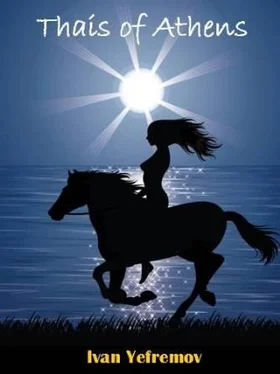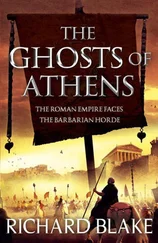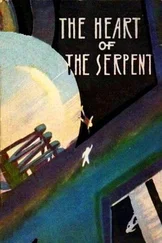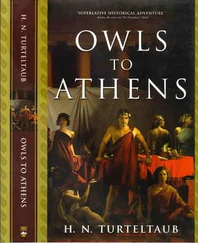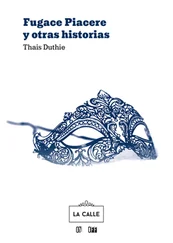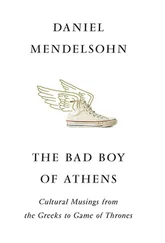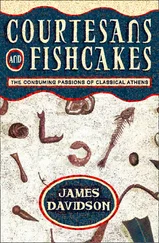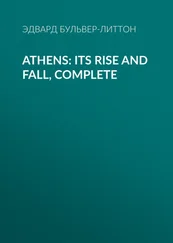Ivan Yefremov - Thais of Athens
Здесь есть возможность читать онлайн «Ivan Yefremov - Thais of Athens» весь текст электронной книги совершенно бесплатно (целиком полную версию без сокращений). В некоторых случаях можно слушать аудио, скачать через торрент в формате fb2 и присутствует краткое содержание. Издательство: Electronic edition, Жанр: Историческая проза, на английском языке. Описание произведения, (предисловие) а так же отзывы посетителей доступны на портале библиотеки ЛибКат.
- Название:Thais of Athens
- Автор:
- Издательство:Electronic edition
- Жанр:
- Год:неизвестен
- ISBN:нет данных
- Рейтинг книги:3 / 5. Голосов: 1
-
Избранное:Добавить в избранное
- Отзывы:
-
Ваша оценка:
- 60
- 1
- 2
- 3
- 4
- 5
Thais of Athens: краткое содержание, описание и аннотация
Предлагаем к чтению аннотацию, описание, краткое содержание или предисловие (зависит от того, что написал сам автор книги «Thais of Athens»). Если вы не нашли необходимую информацию о книге — напишите в комментариях, мы постараемся отыскать её.
Thais of Athens — читать онлайн бесплатно полную книгу (весь текст) целиком
Ниже представлен текст книги, разбитый по страницам. Система сохранения места последней прочитанной страницы, позволяет с удобством читать онлайн бесплатно книгу «Thais of Athens», без необходимости каждый раз заново искать на чём Вы остановились. Поставьте закладку, и сможете в любой момент перейти на страницу, на которой закончили чтение.
Интервал:
Закладка:
“This is the most ancient image of a woman,” Lysippus said triumphantly. “Strong, not very tall, broad-hipped, round-faced and wide-eyed. Is she not beautiful? Who can object to that?” he asked his students.
Leptines, a sculptor from Ethes, said this was the exact image created by the artists of Ionia two centuries ago. The artists Exekias and Psyacs, for example.
“It is as if they copied her face and body,” the sculptor said, pointing at Thais.
“I cannot find a reason for this,” Lysippus said. “But only two sculptural standards became fashionable over the last century. One imitates the unrivaled coras of Acropolis and recreates a tall woman with a powerful chest, widely spaced breasts, broad shoulders and stomach muscles akin to male athletes. They are not agile and do not require strong development of rear muscles, which is why they are flatter in the back. The other standard, introduced by Polycleitus, Cresilaus or perhaps even Phradionus, is a broad-shouldered, narrow-hipped, small-breasted woman with no waist, who looks more like a boy and also has an undeveloped behind. Such are female runners, Amazons and female Olympians created by these artists. You, Ephesian, know about the statues created for the temple of Artemis in your city by the sculptors I just named a hundred or more years ago.”
“They ruined the image of Artemis and the Amazons,” Leptines exclaimed. “Enchanted by teenage youths, they attempted to find the image of a boy in a woman. And why would a man need a boy instead of a woman? The harsh and simple life of my ancestors, who escaped from the Dorian invaders to come to the shores of Asia Minor, created stout, muscular, agile women of small height. They and Carian and Phrygian women, who went to the north and made it to the river Thermodont, founded the city of the Amazons. They served Artemis with a motto: no obedience to any man.”
“What you tell is so interesting, sculptor,” Thais exclaimed. “Then I am a woman created for a harsh life?”
“You are from a pure bloodline of those who lead a harsh life,” Leptines replied.
“Ephesian, you took us away from the main conversation, though your story is interesting,” Lysippus interrupted, then pointed at a second stool next to Thais. “Eris, stand here.”
The black priestess looked at her mistress questioningly. “Go ahead, Eris, and do not be embarrassed. These are not regular people, these are artists. And we are not just women to them, but the embodiments of goddesses, nymphs, or muses, all things that enlighten a poet. We elevate his dreams into the vastness of the world, sea and sky. Don’t resist if they touch you. They need to know which muscles are concealed under the skin in order to portray the body correctly.”
“I understand, Mistress. But why are there only men here? Are there no female sculptors?”
“You ask a deep question. I shall ask Lysippus. I think it is that we do not possess the same love and desire toward a female image as men do. And we have not yet matured to realization of beauty outside of our personal relations. Perhaps there are women sculptors among the followers of Sappho of Lesbos.”
Eris climbed onto the second stool, dark as Egyptian bronze. She did not possess that self-assured, coquettish supremacy that overflowed in Thais, but had the even greater serenity of a goddess, indifferent to earthly fuss, whose youthful liveliness was the only thing separating her from a harsh or even tragic destiny.
“Bombaks!” Leptines exclaimed in astonishment. “They look alike.”
“I expected as much,” Lysippus said. “Similar purpose of their bodies and the equal level of harmonious development led to inevitable likeness. But let us take these features separately, in order to understand Agesander and his predecessors, who turned the fashion of Helenian sculpture toward foreign images and models. You, Cleophrades, shall correct me or add to my statements, as I am not a great connoisseur of feminine beauty. So shall you, Leptines, because while you are young, you clearly understand the true language of the body.
“We must not repeat a common mistake of the Helenian artists, which the sculptors and painters of Egypt and Crete managed to avoid. It is particularly important to remember that when you attempt to create a composite image, its purpose is to convey beauty to the entire people, not just to fulfill an order from one customer. If that is done, the image will be created to serve only two people: the client and the sculptor himself. When gods bestow the gift of vision and recreation upon an artist, and give him a tender, sensitive soul, they often take away some of his manliness.”
Lysippus hesitated, noticing that his listeners were flushed and frowning.
“I do not wish to accuse artists of lacking in manhood compared to an average person. I refer of that Herculean courage which exists in a wrathful soul, filling heroes and other remarkable people. Compared to them, you are fragile.”
“What is so bad about that?” Leptines said impatiently, interrupting his teacher.
“Nothing. But the demands are the same both from a hero and from a great artist, if he dreams of creating a truly great work of art. Lack of courage leads us toward errors in selection of a model and an image of a woman. We are discussing women, after all, and that is most important. Frequently the artist chooses a model and creates a sculpture of a maiden or a goddess with large facial features, very manlike, broad-shouldered and tall. A hero will never pick a woman like that, nor would a strong courageous man who is a leader to his people. A hero requires a woman filled with feminine power, capable of being his wife and companion and of bearing strong offspring.
Such lovers accompanied artists from the ancient times, for the artists themselves were also warriors, farmers and hunters.
“Watch and listen.” He turned toward the models, gesturing with his hands. “They are both of small, nearly identical, height, as appropriate for a Kharita. Thais is,” Lysippus squinted an exacting eye, ”three elbows and three palystas, Eris is taller by half a palysta. That is shorter than the modern standard, based on Persian and Finikian women.
“The second important feature is a combination of a small waist with rounded hips, forming uninterrupted lines of an amphora without a single chink. This has been celebrated by our poets since the ancient times and was once valued greatly by our sculptors. Nowadays, from Polycleitus to the newly-fashionable Agesander, women’s stomach muscles are portrayed to be the same as men’s, but the hips are forgotten. It is a serious mistake. Look here.” He approached Thais and ran his hands over her hips. ”The wide pelvis of a mother demands balance. How? By developing the muscles that are weak in a man, and less necessary of course. Instead of a thick layer of upper abdominal muscles, a well-built woman has deeply set muscles, here,” Lysippus pressed into Thais’ side, causing her to half-sigh, half-groan.
Lysippus went over to Eris and placed his hands, pale from working with wet clay, over her dark skin.
“See? She too has a very strong muscle that hides behind the oblique abdominal one. It spreads like a broad leaf from here, from the lower ribs to the pelvic bones and the pubic bone. Along its center line is another muscle in the shape of a pyramid. See how well it is outlined under the smooth skin?
“These muscles support the lower part of the stomach and press it between the convex front side of the hip, near the groin. This is also a result of their constant development. Remember this well, because this illustrates the proportions contrary to those of Agesander’s statue, whose stomach protrudes too much at the bottom. As I understand it, the delightful convexity of the hips is caused by exercising the muscles that lift the leg forward. But that is not enough.”
Читать дальшеИнтервал:
Закладка:
Похожие книги на «Thais of Athens»
Представляем Вашему вниманию похожие книги на «Thais of Athens» списком для выбора. Мы отобрали схожую по названию и смыслу литературу в надежде предоставить читателям больше вариантов отыскать новые, интересные, ещё непрочитанные произведения.
Обсуждение, отзывы о книге «Thais of Athens» и просто собственные мнения читателей. Оставьте ваши комментарии, напишите, что Вы думаете о произведении, его смысле или главных героях. Укажите что конкретно понравилось, а что нет, и почему Вы так считаете.
